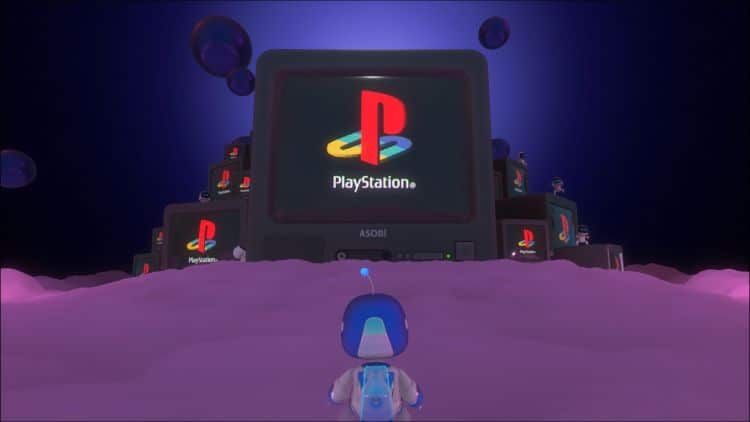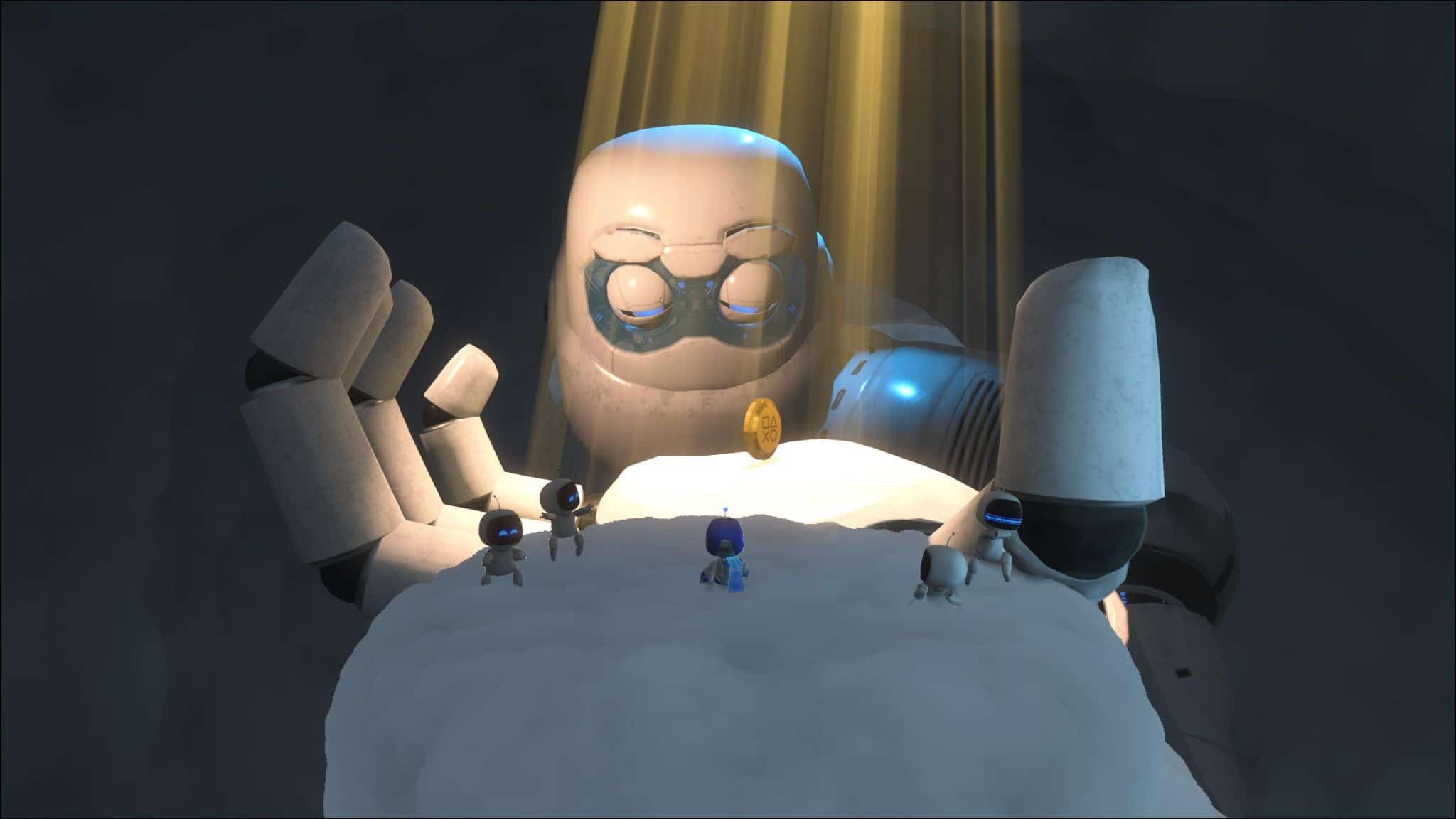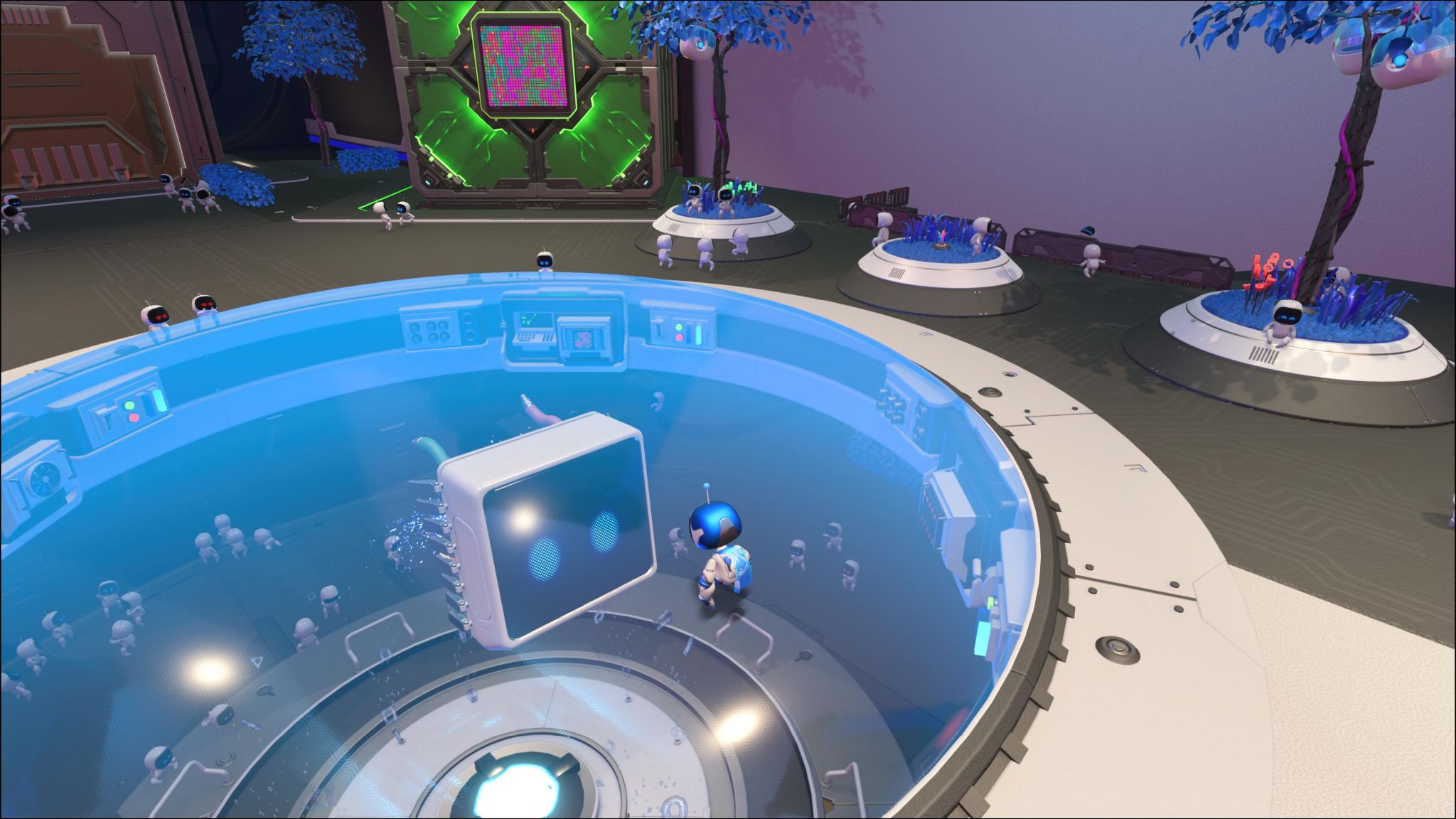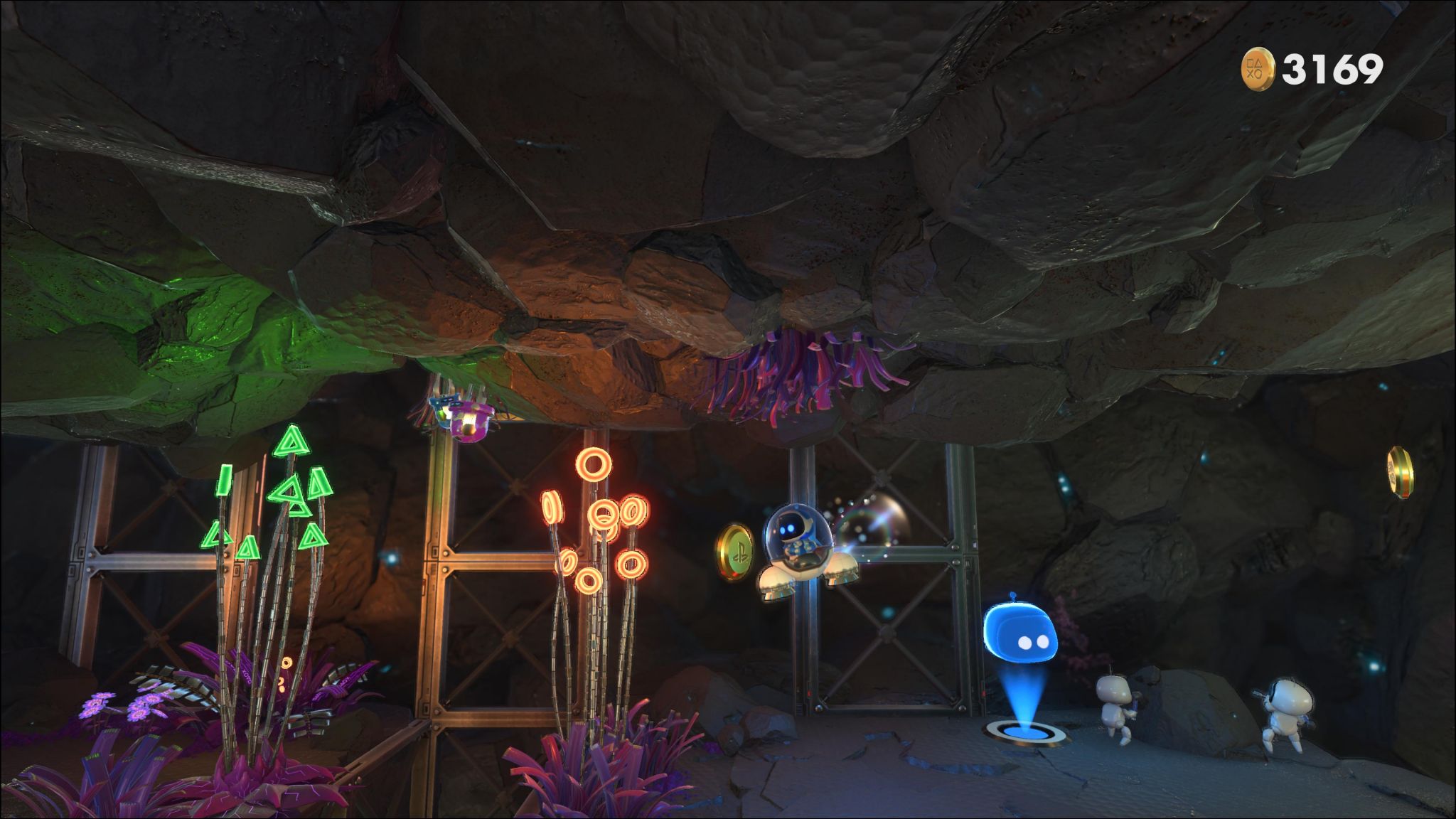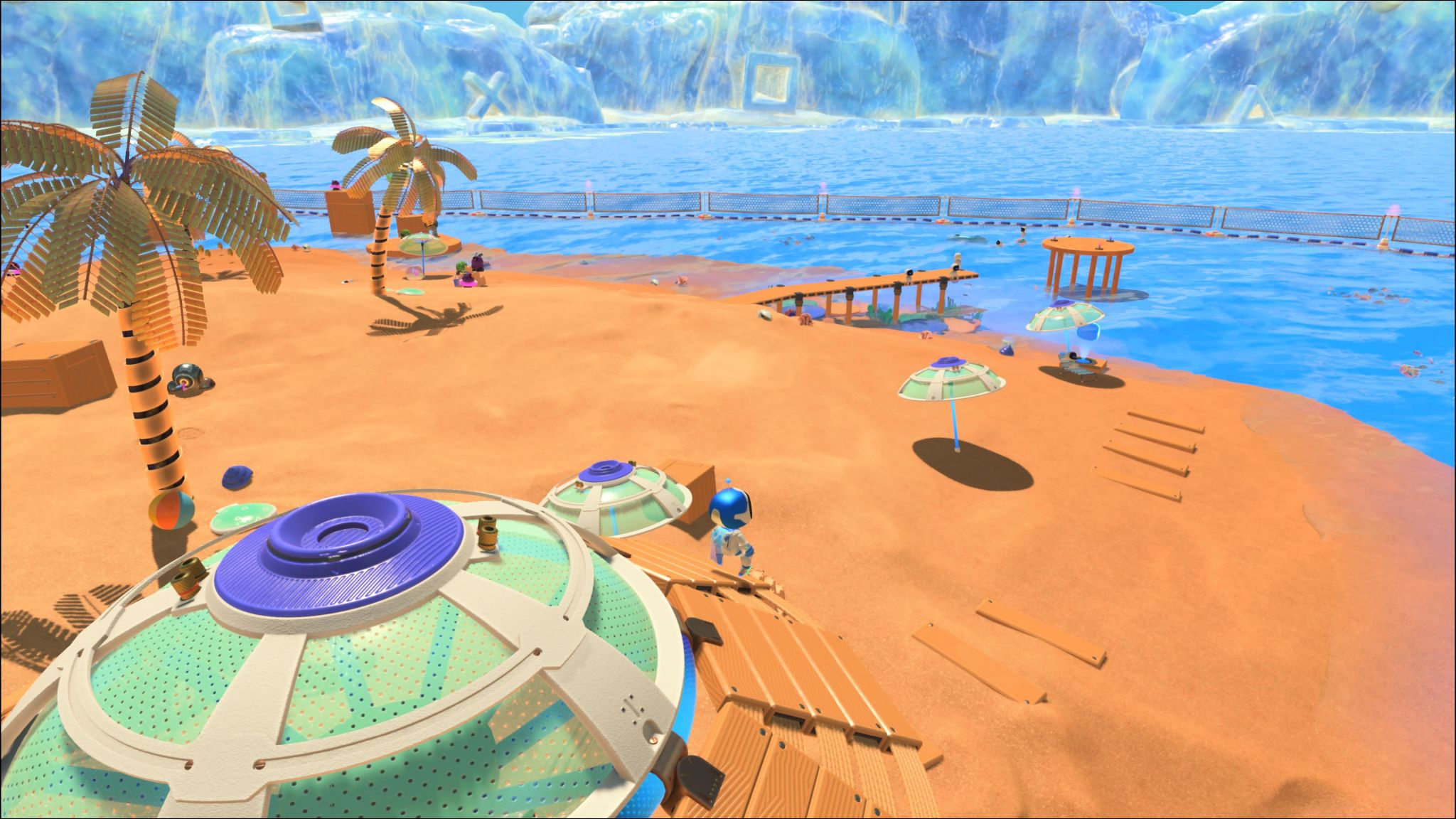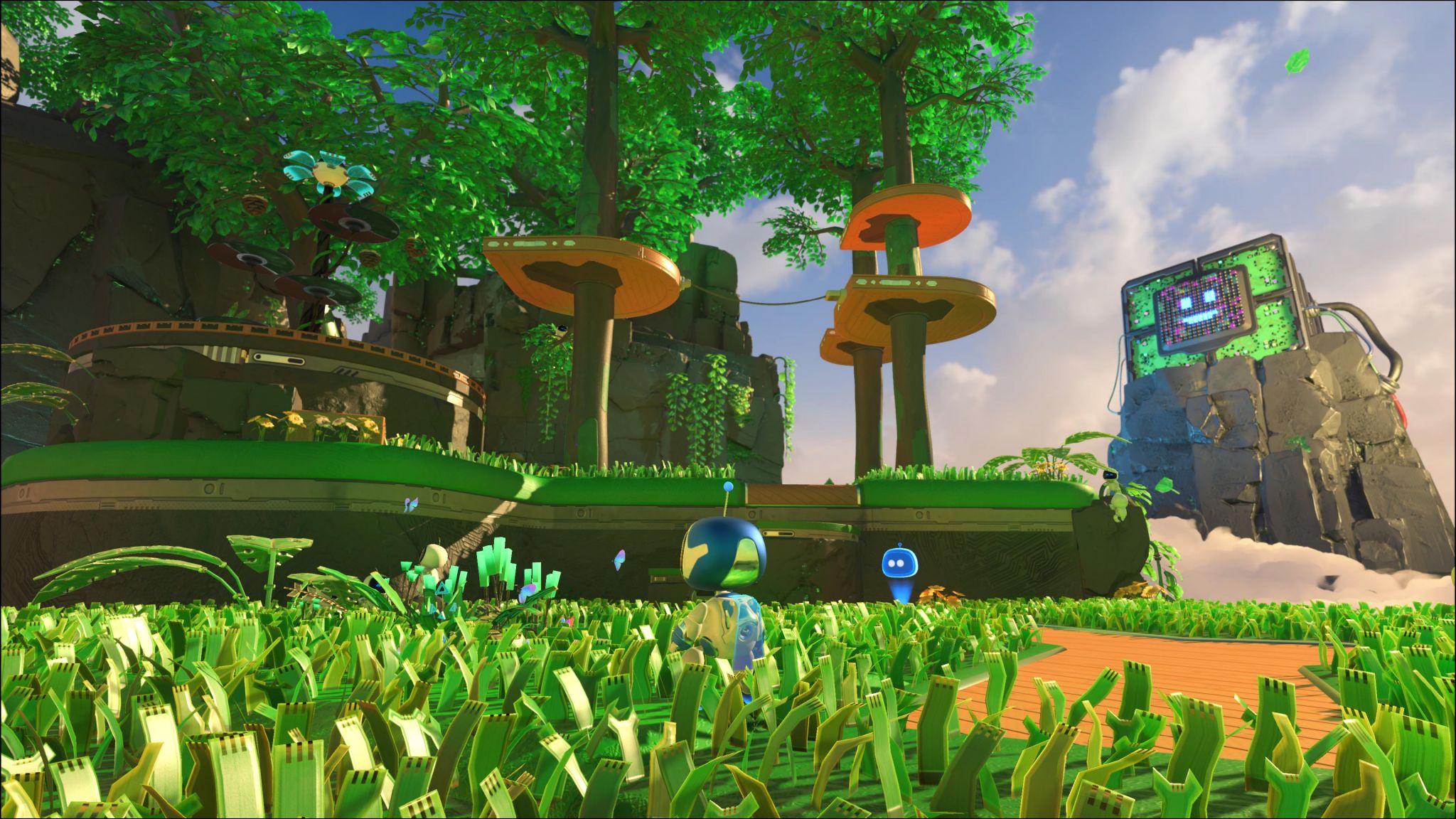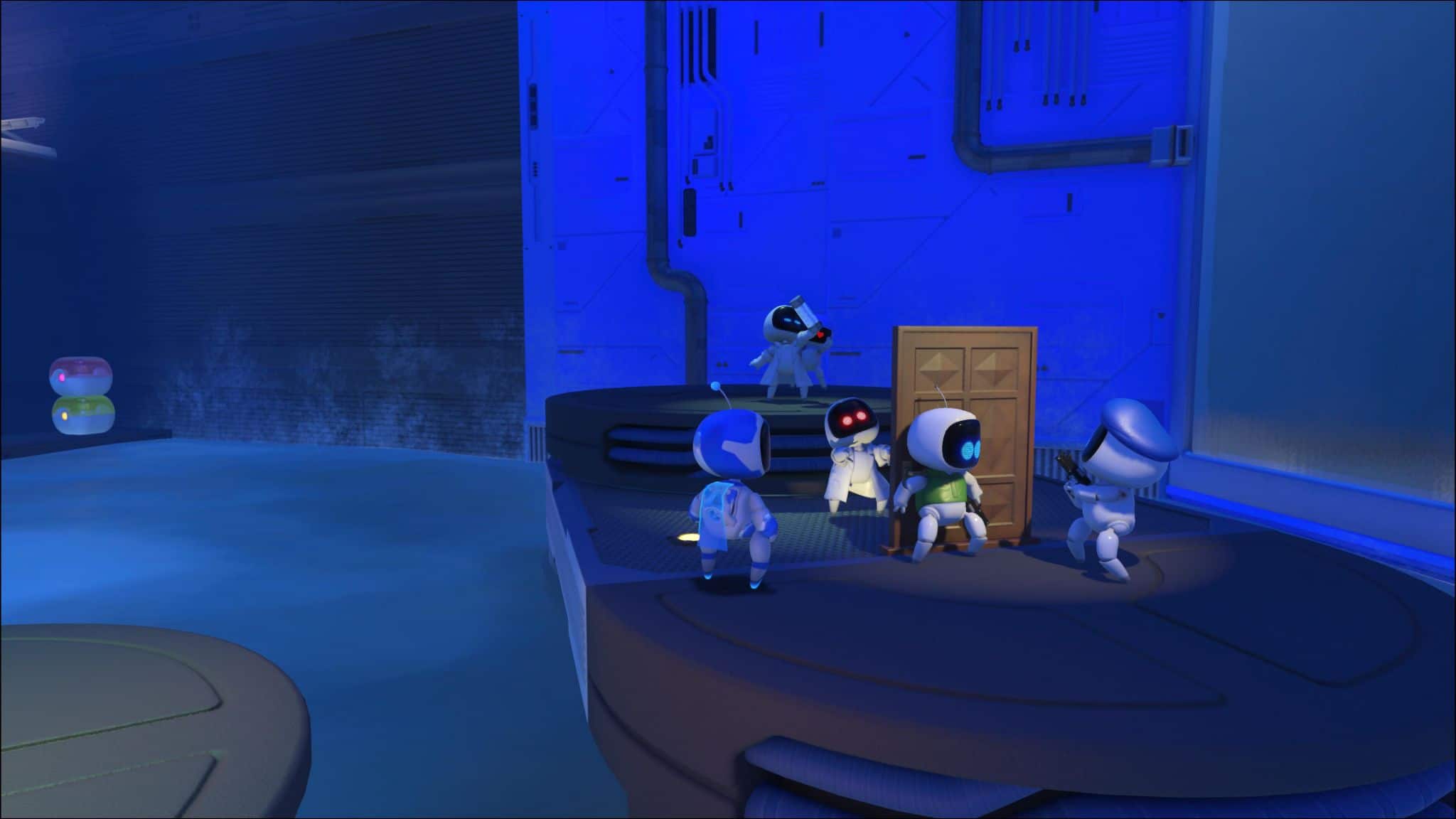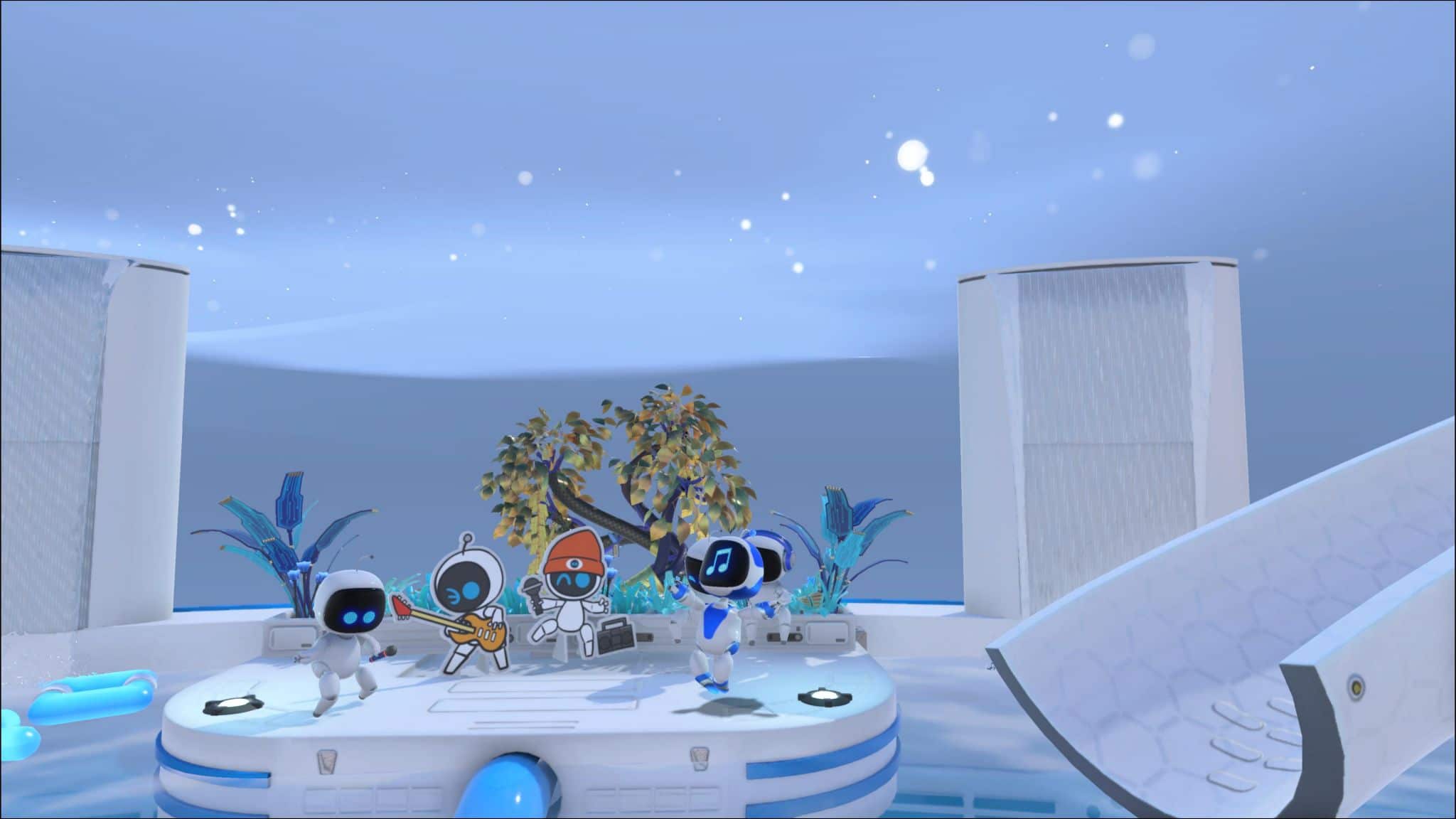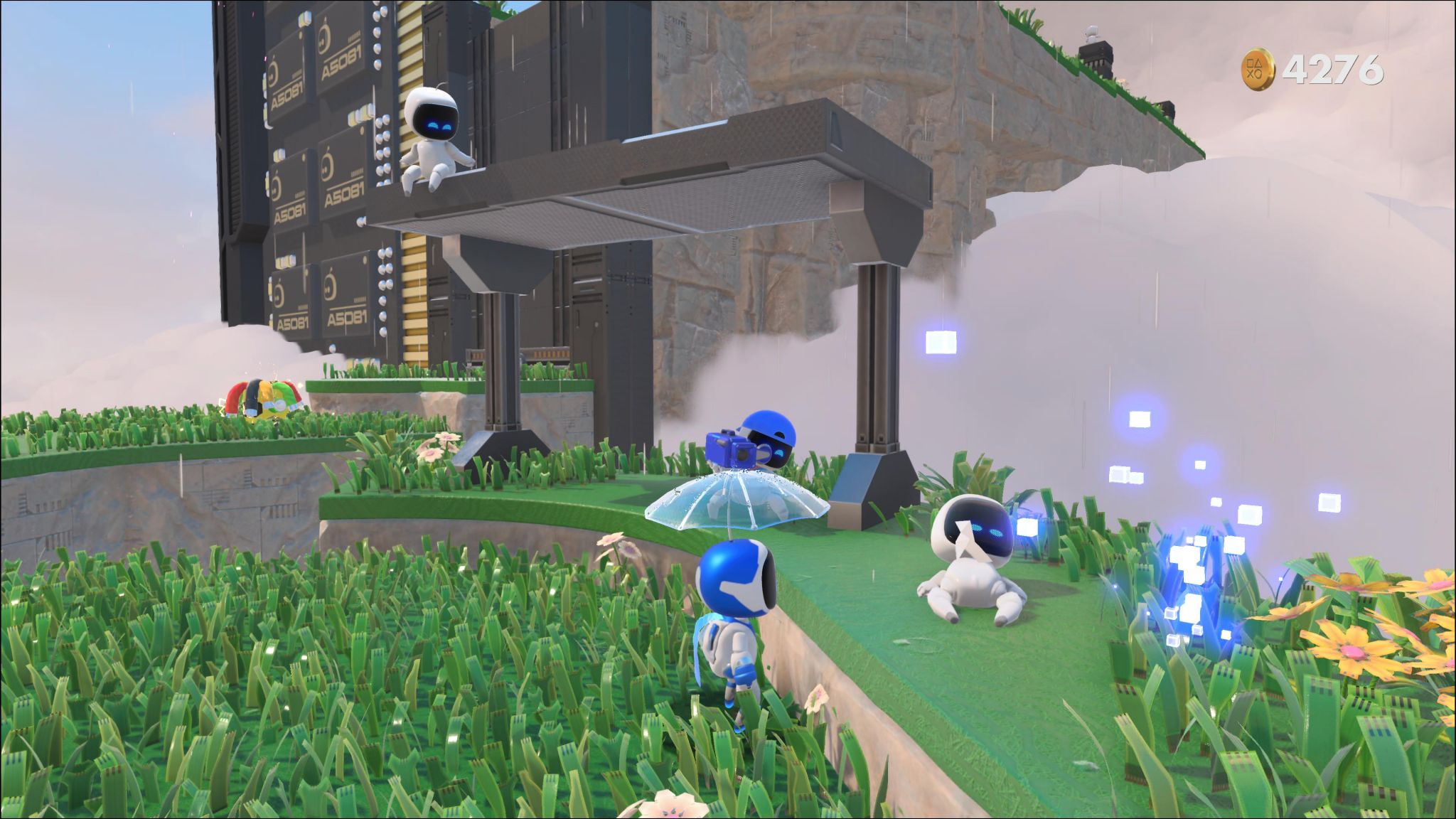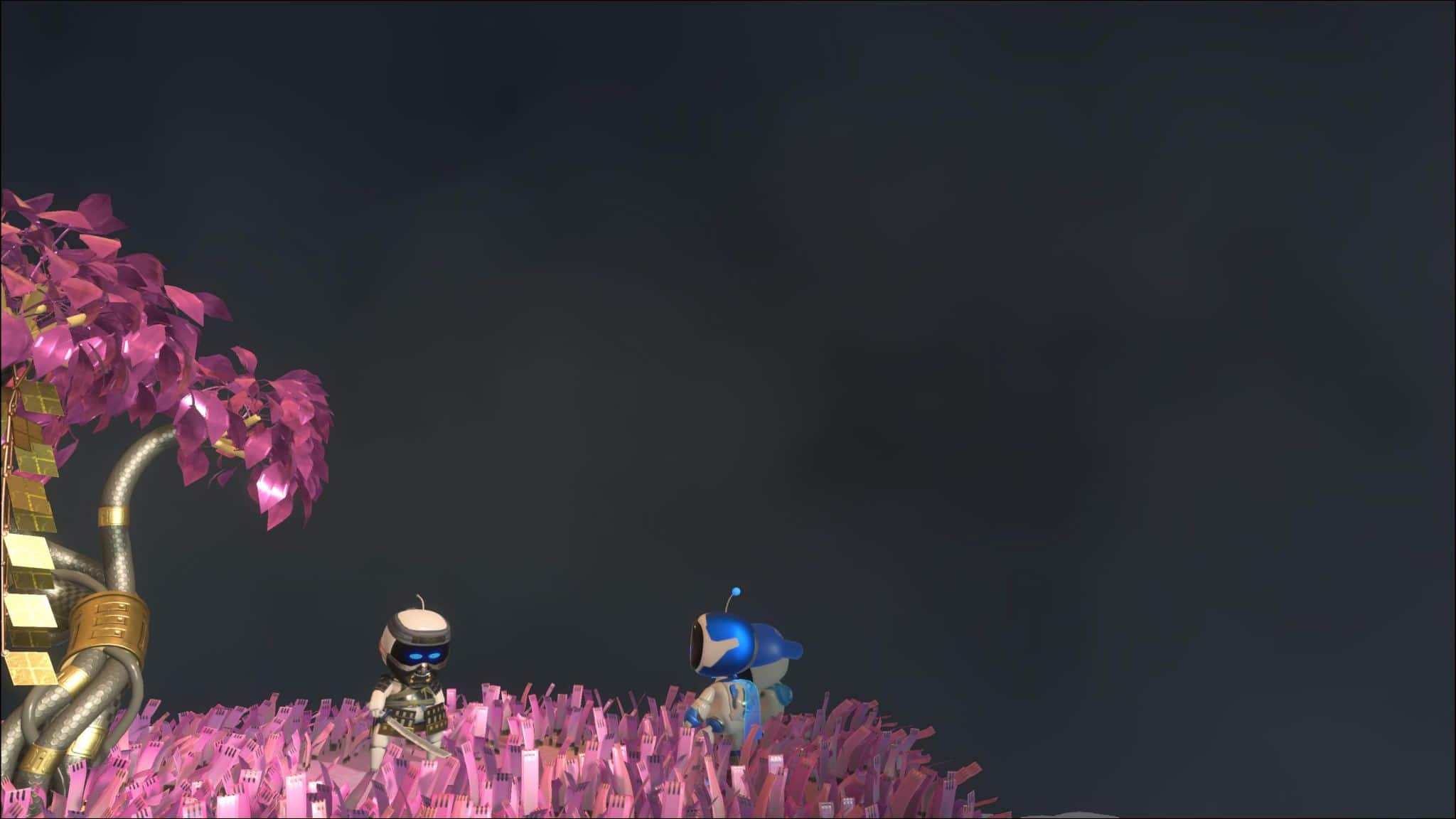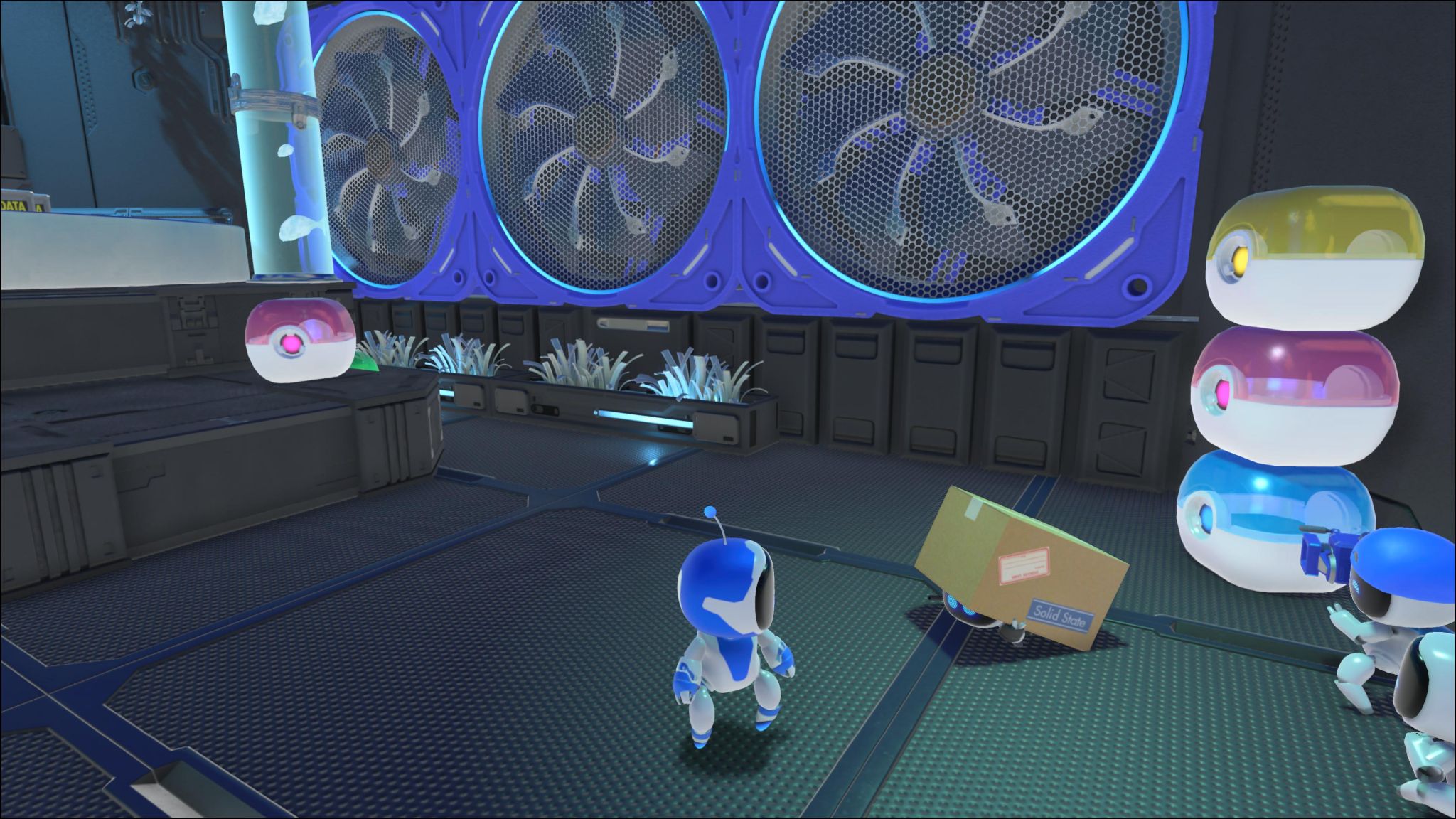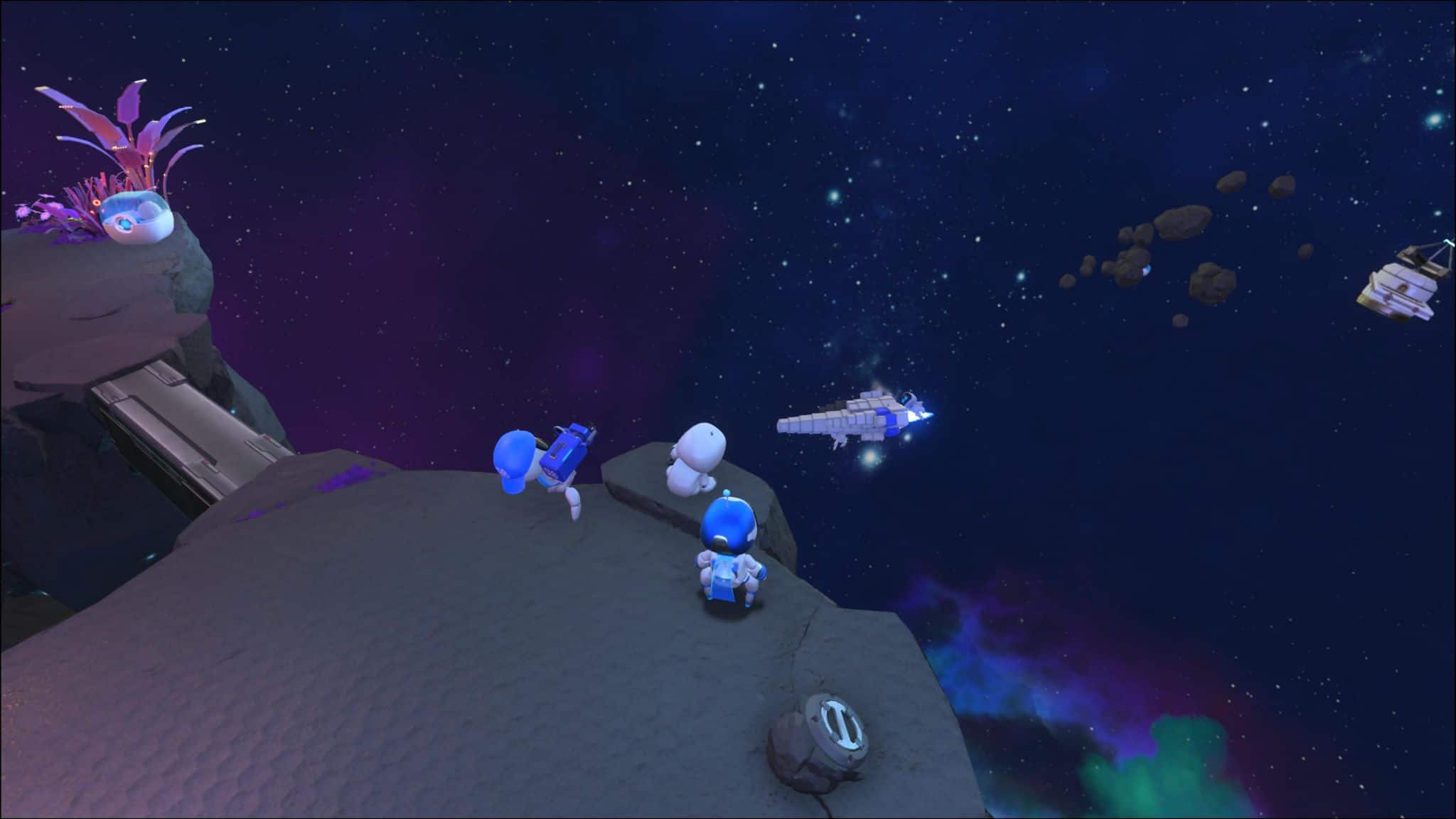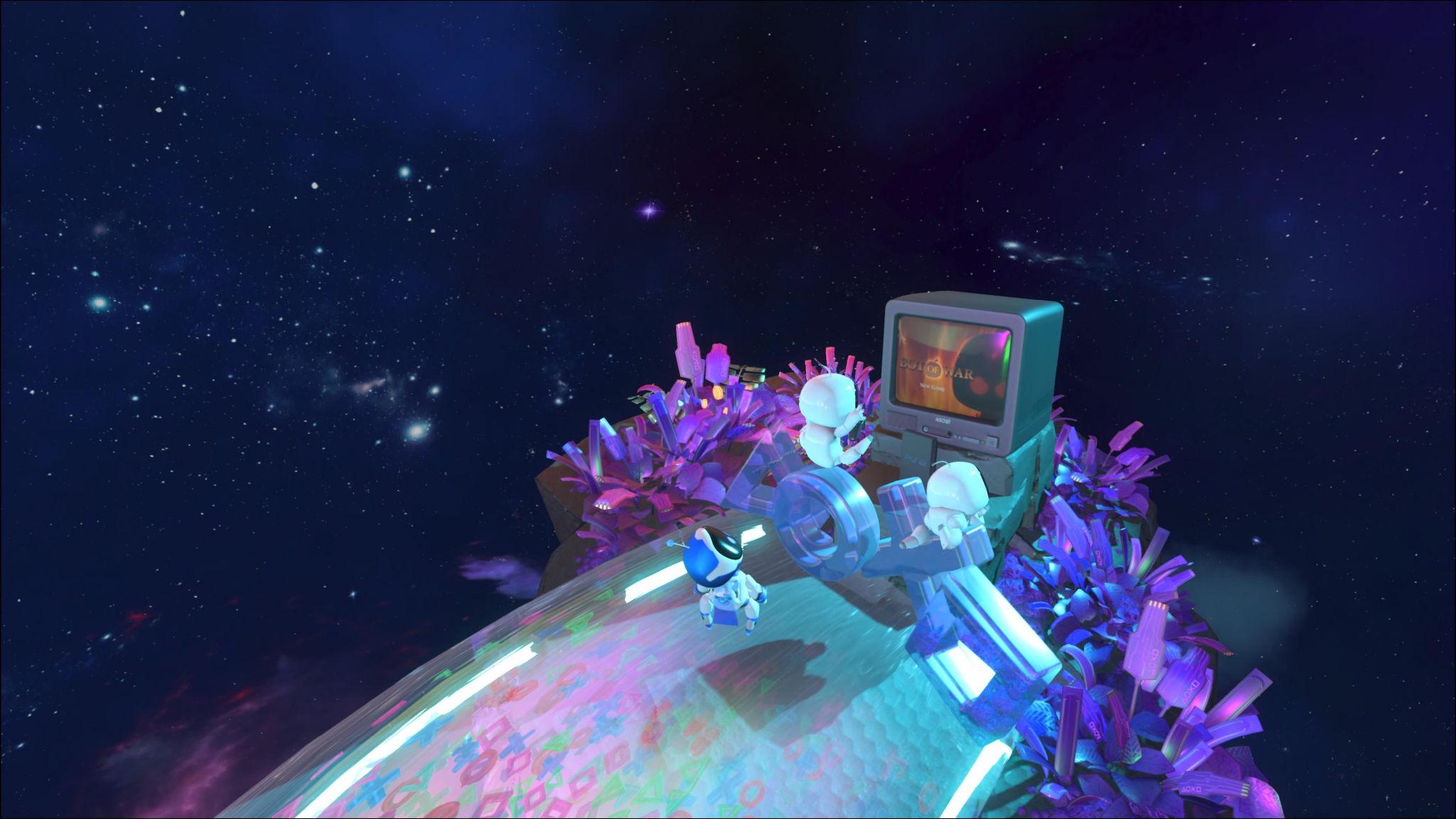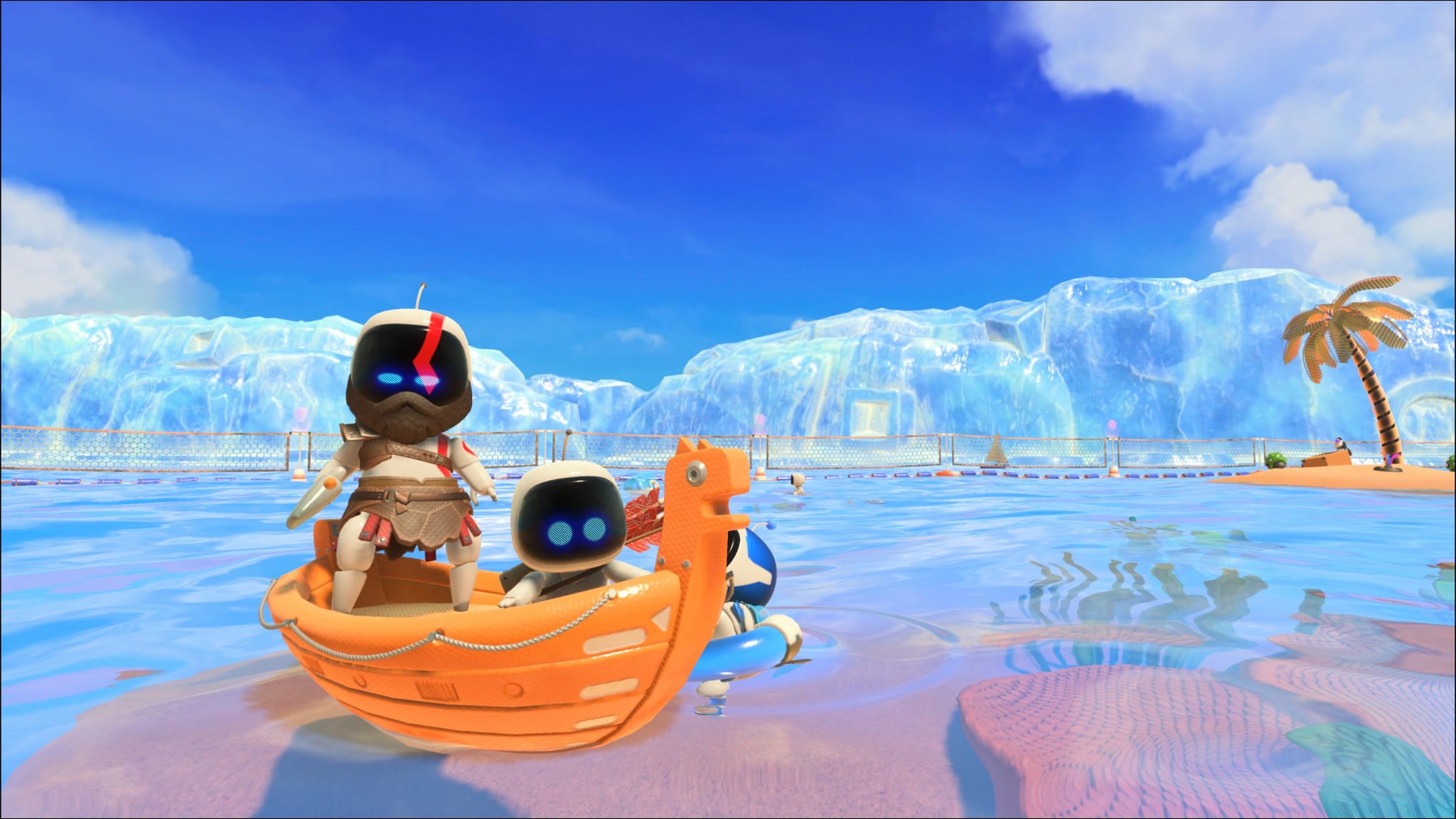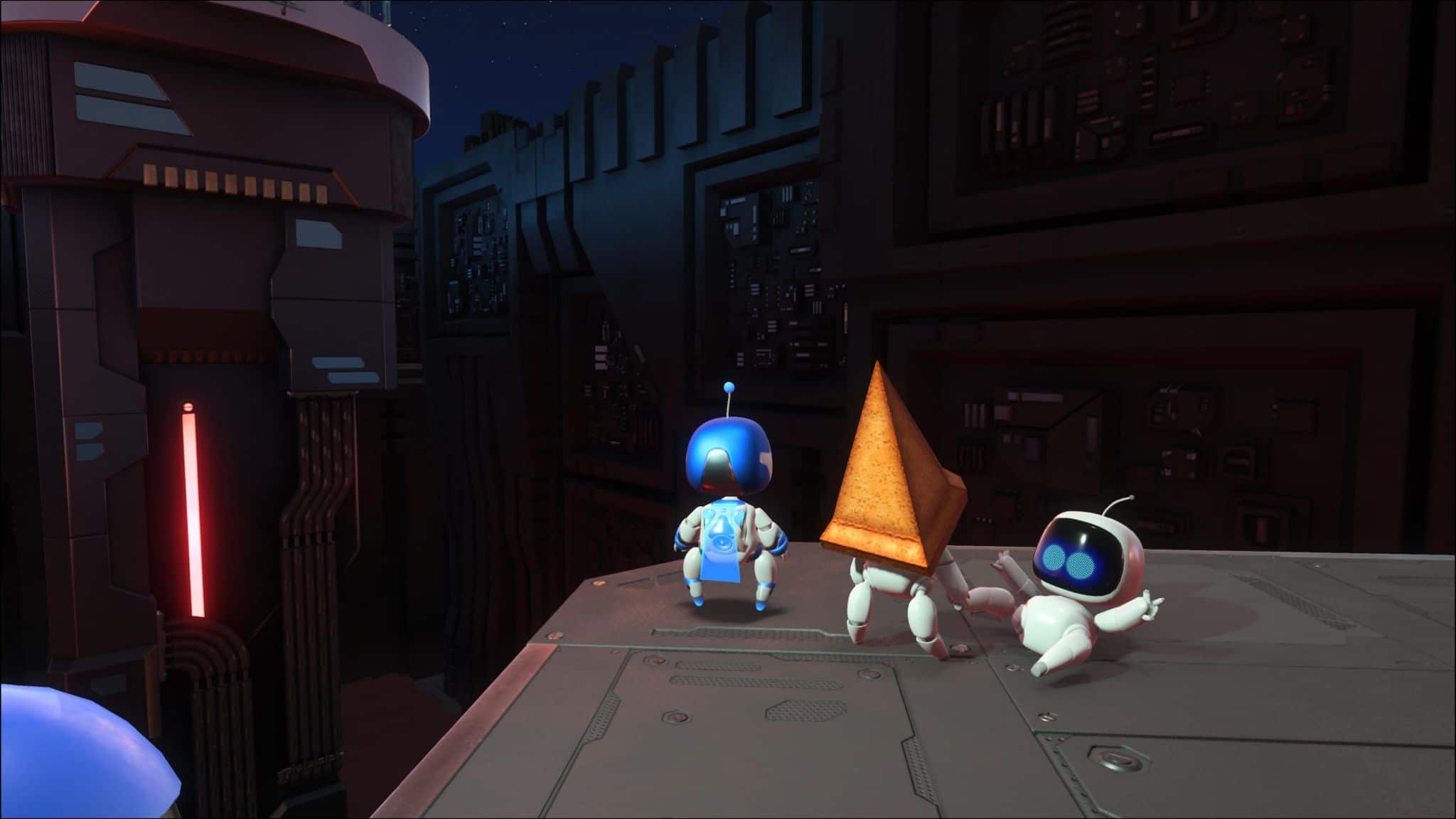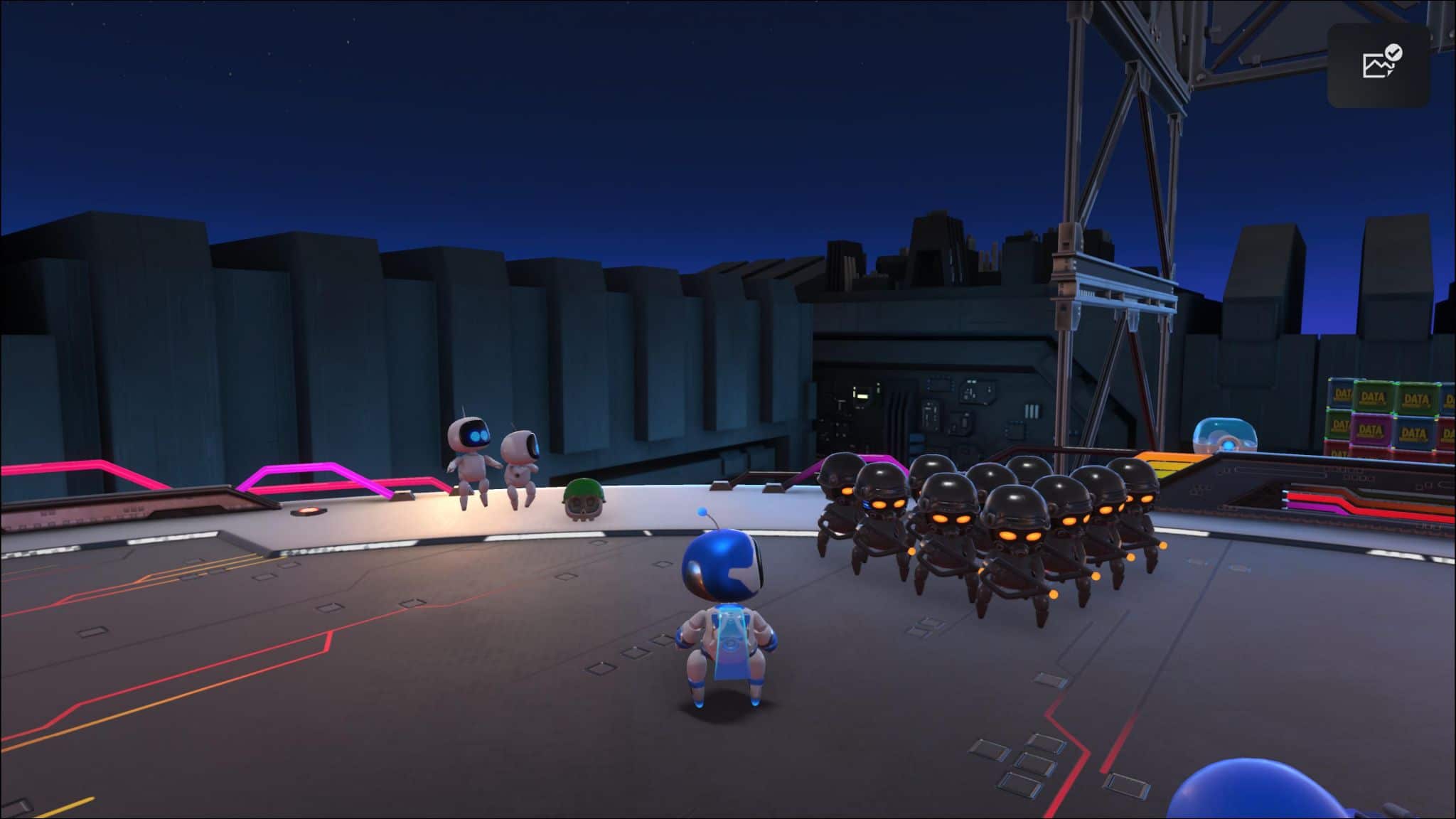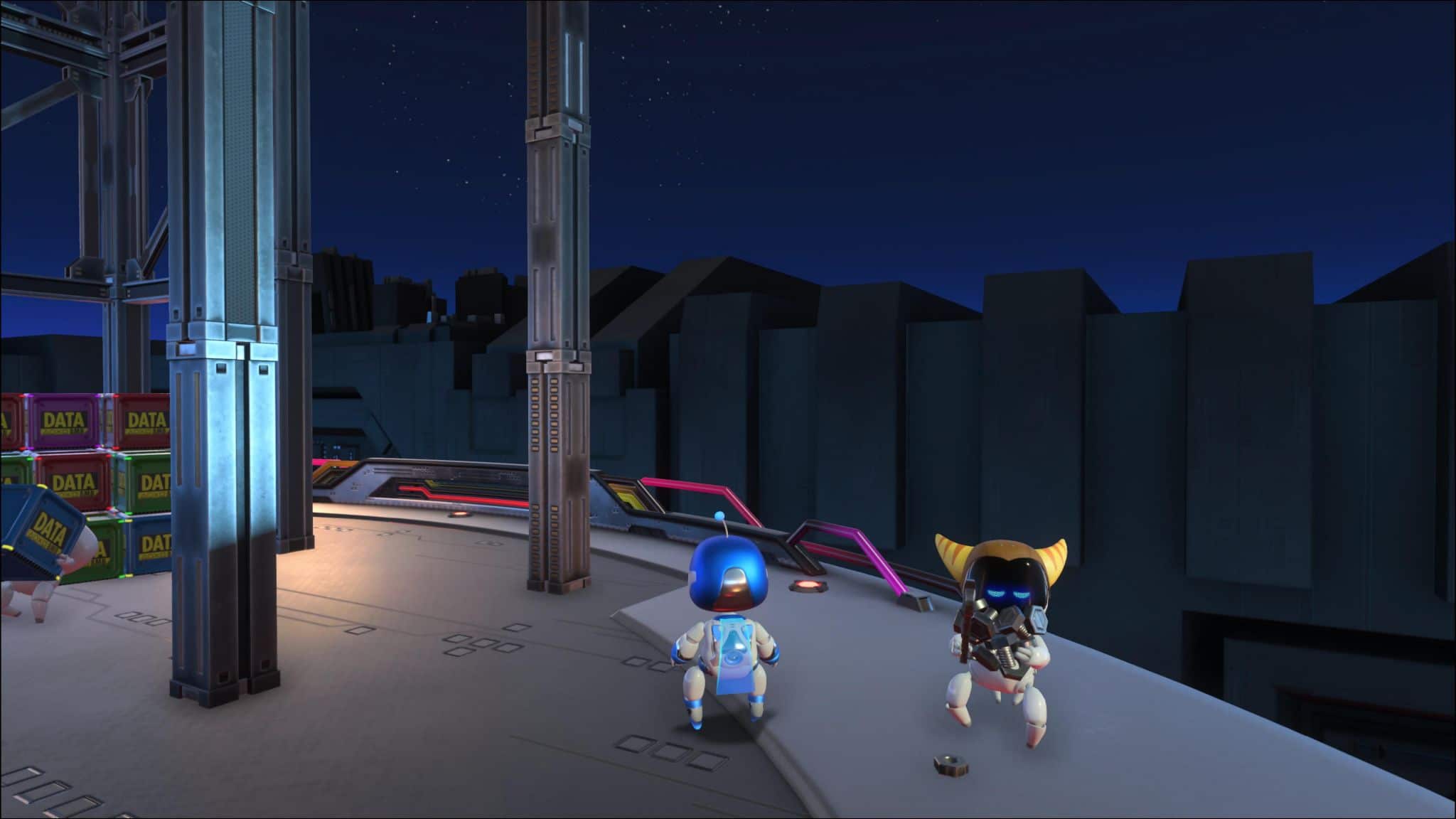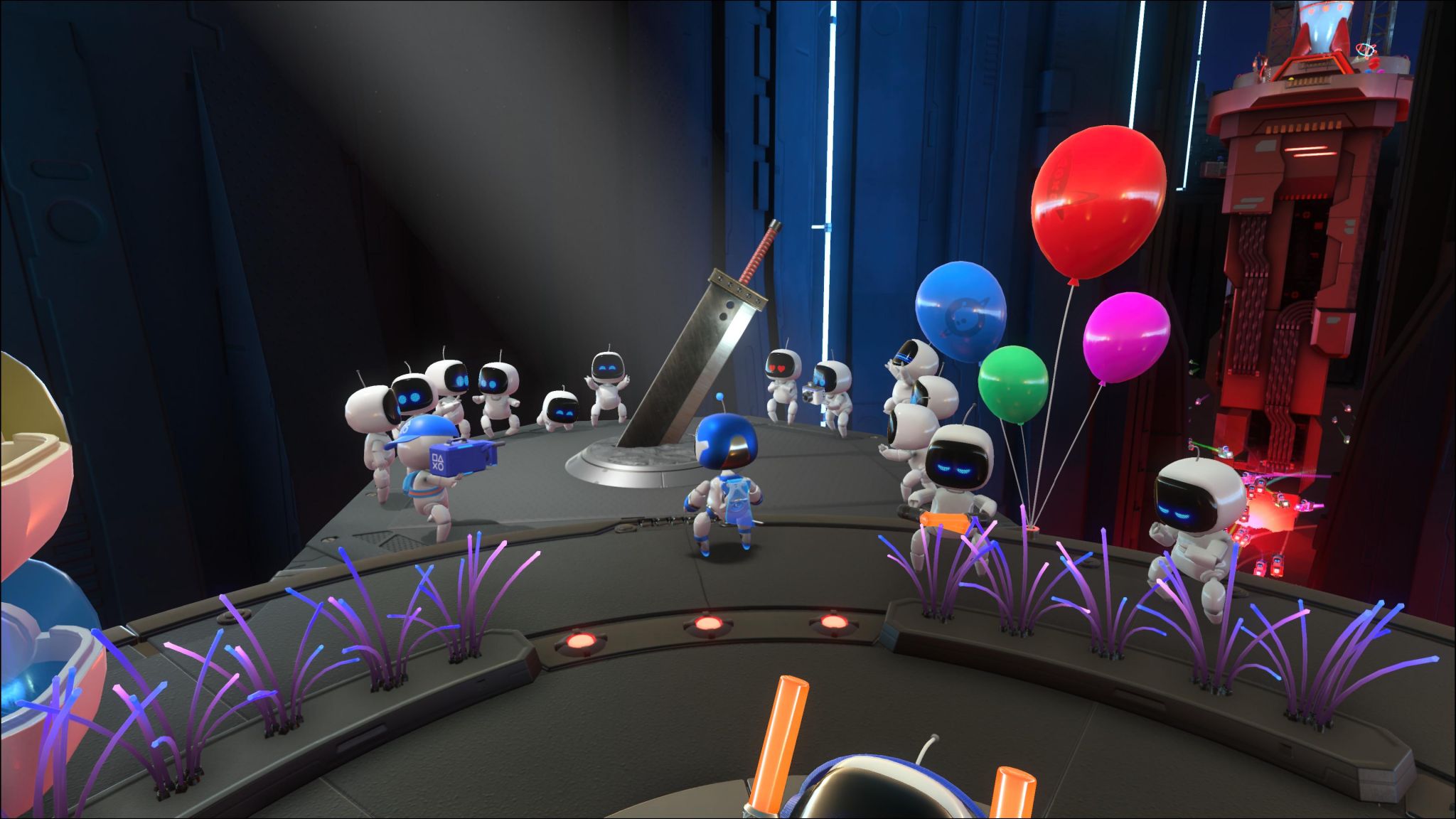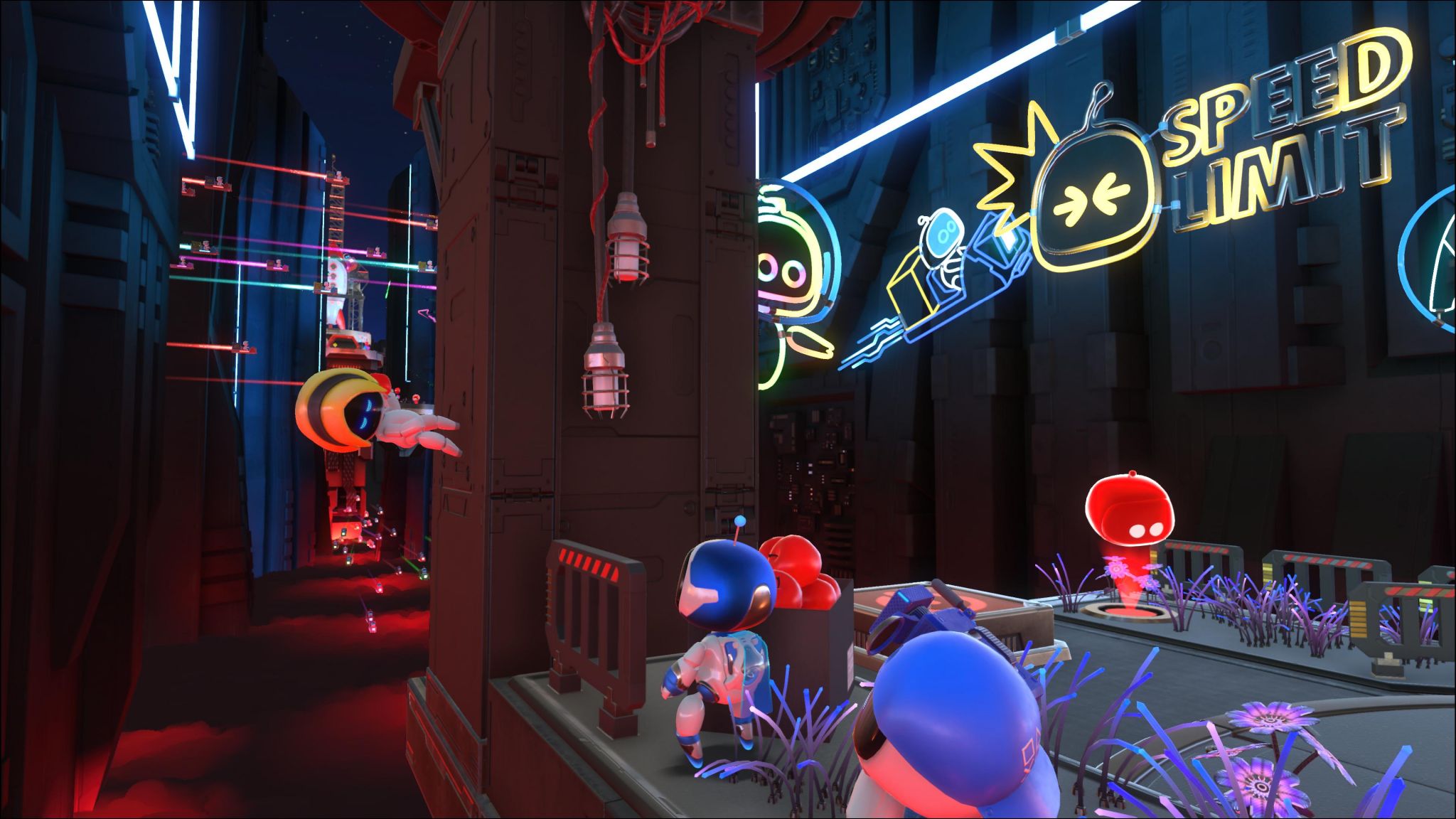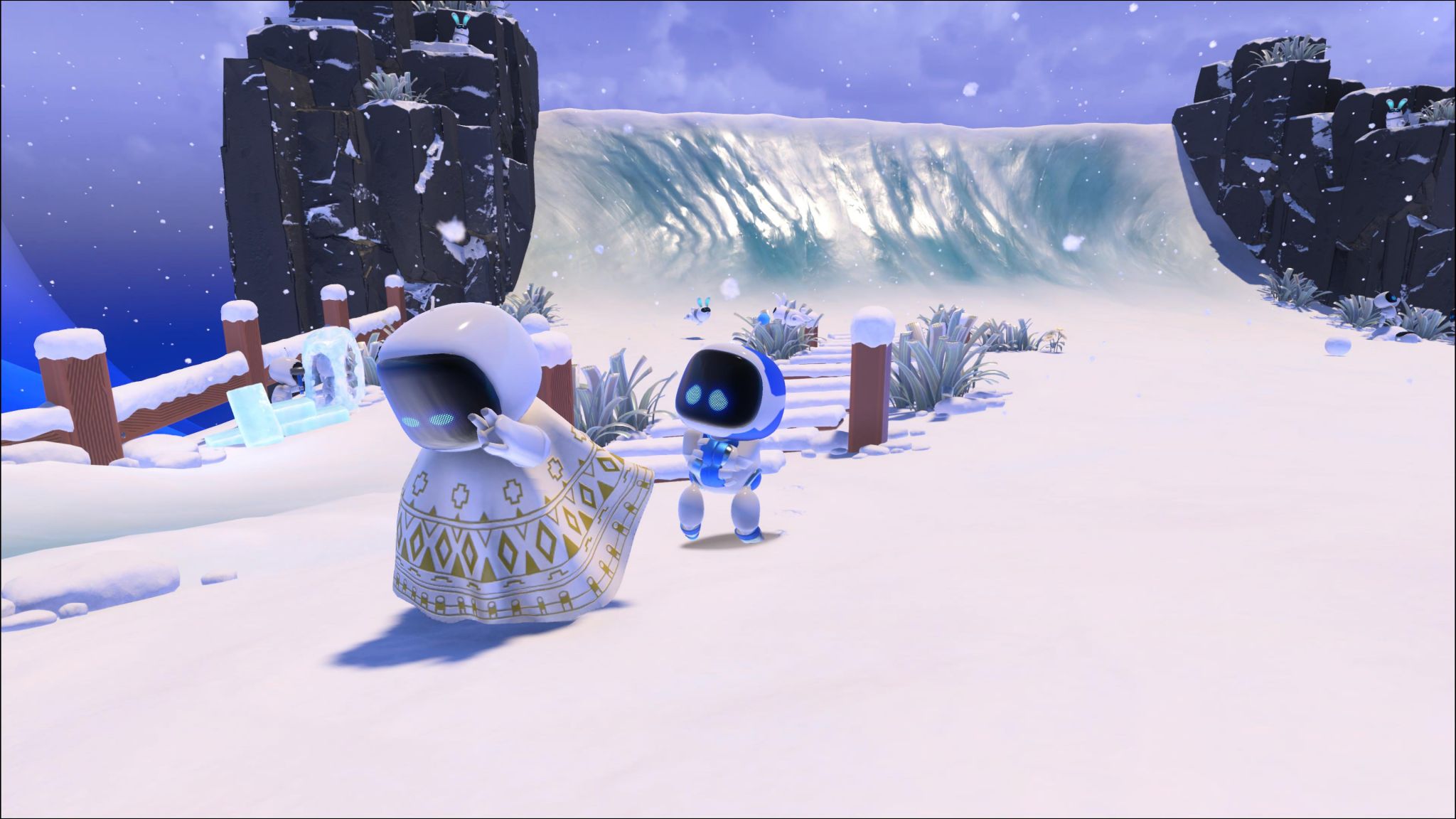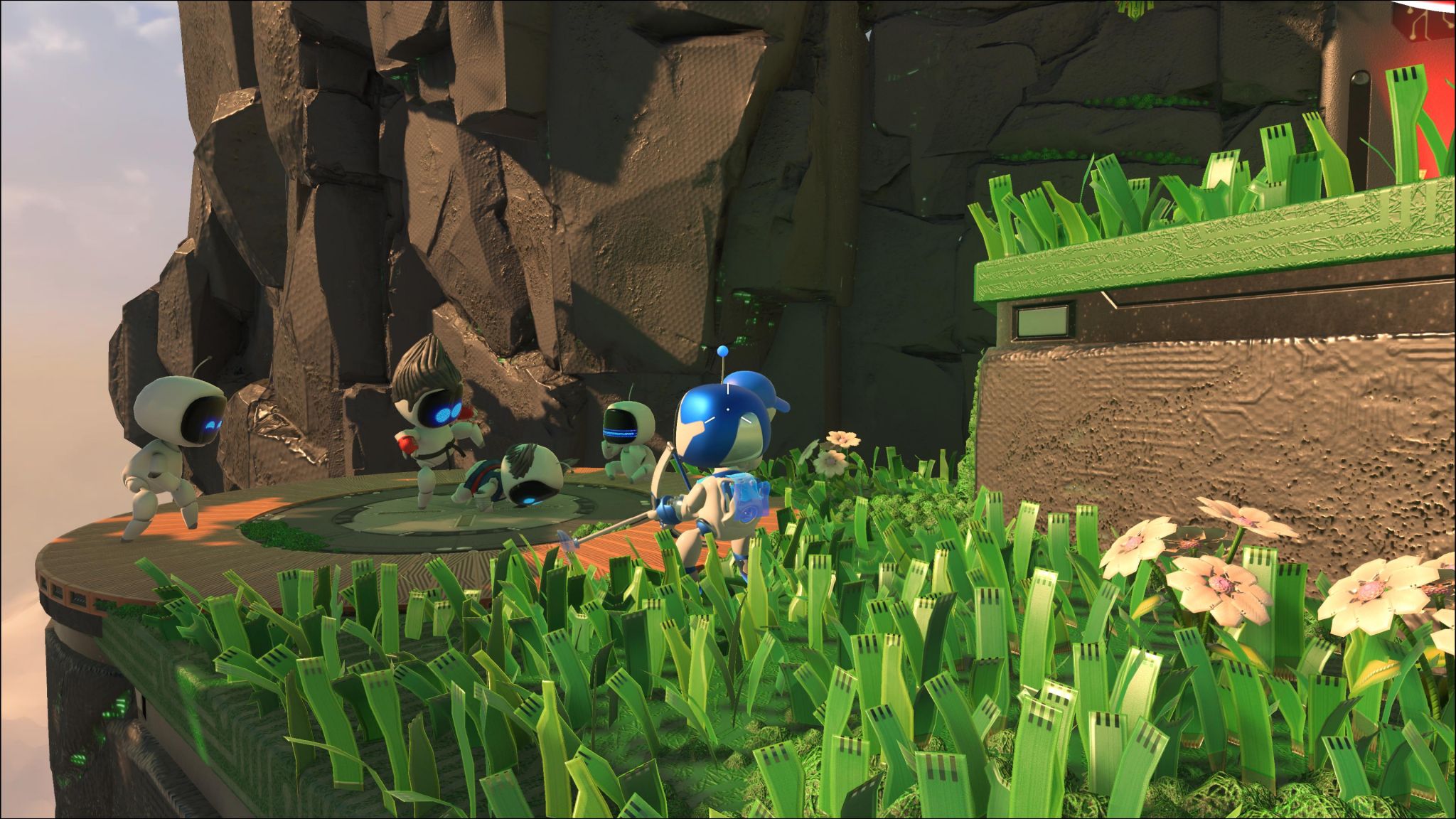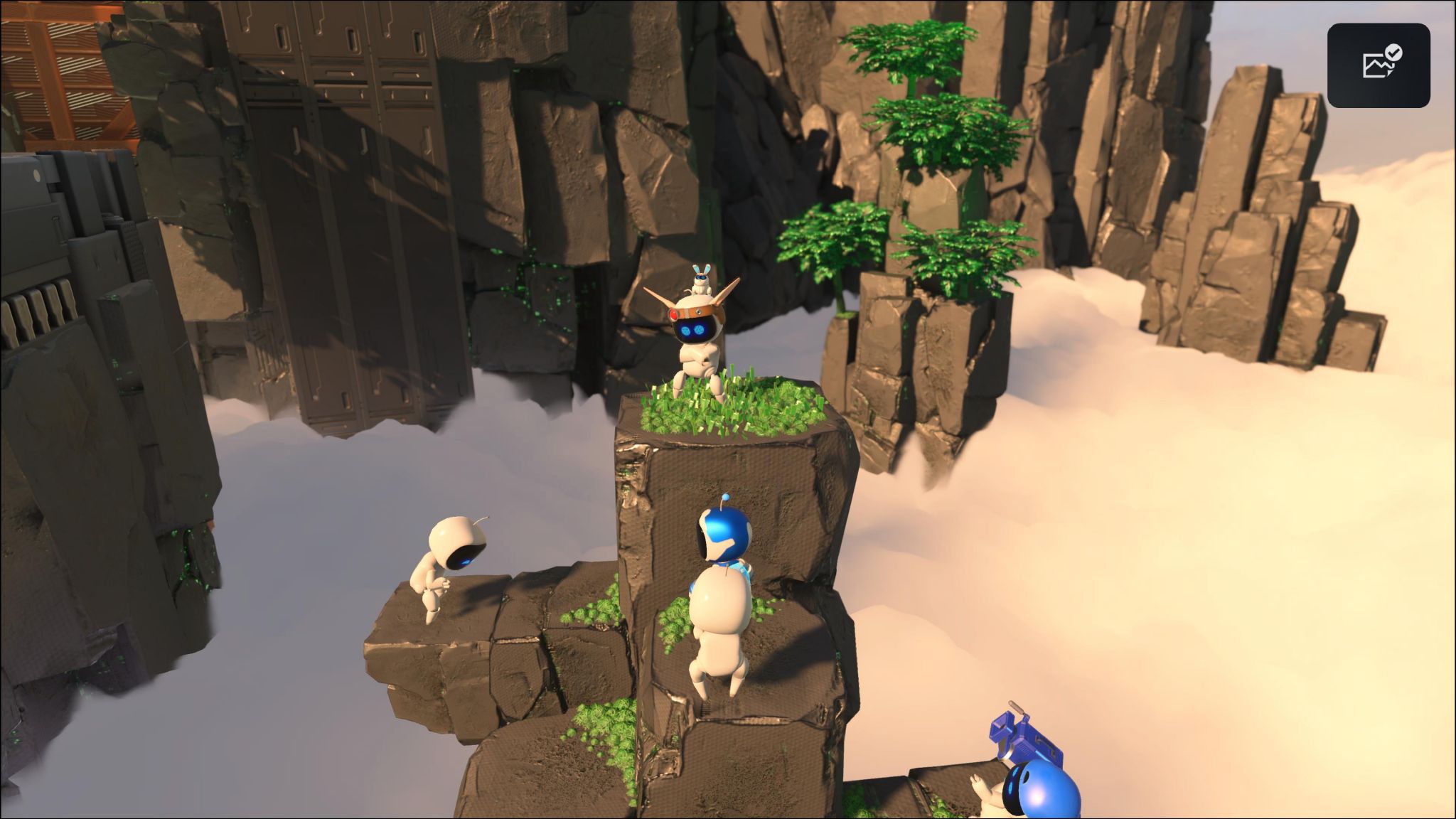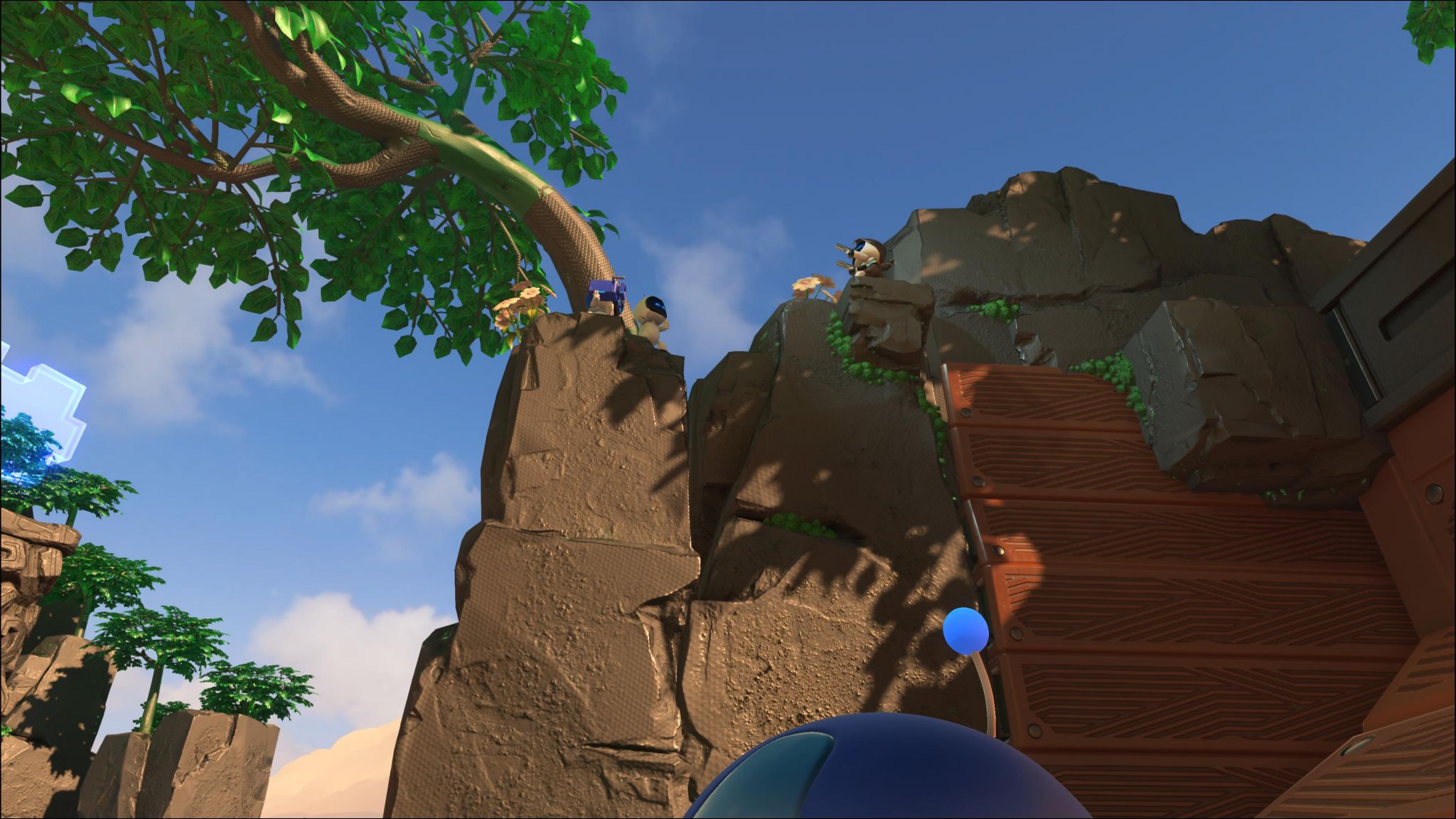For the players indeed.
With each new generation, Sony has always offered some sort of tech demo to show off what you’ve just paid for. I’m sure most people will remember the PlayStation 1 T-Rex demo that blew people’s minds back in the day. While I may not have been old enough to remember it, I would like to imagine that Astro’s Playroom does for the DualSense controller what the T-Rex demo did for 3D graphics because it definitely blew my mind.
Game Name: Astro’s Playroom
Platform(s): PlayStation 5
Publisher(s): Sony Interactive Entertainment
Developer(s): SIE Japan Studio, Team ASOBI!
Release Date: 12th of November 2020
Price: Included with PlayStation 5
Astro’s Playroom is at a unique advantage over most PS5 games at the moment because it comes pre-installed with every console. At its core Astro’s Playroom serves the same purpose as the Playroom on the PS4; it’s just a tech demo. Except for this time around, Team ASOBI! decided to either go hard or go home and delivered not only the expected tech demo but a genuinely fun game as well.
Due to residing in the UK, I didn’t get a chance to get my hands on a PS5 until November 19th, but I made sure to pay attention to all the pre-release and post-release news and reviews surrounding the console to see what the reception was. While most reviewers talked about Astro’s Playroom, not many people went into detail and only mentioned that it was a great way to get to grips with the new controller. While I understand that a free bit of software was not at the top of the priority list with games like Demon Souls and Spider-Man: Miles Morales taking center stage, I still can’t shake the feeling that Team ASOBI! deserves more recognition for Astro’s Playroom.
While it’s not the perfect experience, I managed to platinum the whole thing within 6 hours. Suppose I had been playing it to get through all the levels, it probably would have taken around 2 to 3 hours – it’s a bit on the short side, and you could argue that it lacks replay value. Normally criticisms like the ones I just put forward would be deal-breakers for me if this was a game that I had to pay for, but given that Astro’s Playroom is included with each PlayStation 5, it’s not so much of an issue.
The gameplay of Astro’s Playroom is nothing particularly new. If you played a 3D platformer, then you’ve played Astro’s Playroom. If I were to narrow down the gameplay a bit, I would say that it feels like Crash Bandicoot with a bit of Mario Sunshine mixed in for good measure. The controls are tight and responsive, making the platforming feel really satisfying, which is the most important factor for a platformer. Astro’s Playroom also makes sure to utilize all aspects of the DualSense controller, such as SIXAXIS control. Of course, the new adaptive triggers and rumble mechanisms are on full display as well.
The game takes place within your PlayStation 5 with 4 worlds to explore, a CPU-based hub world, and a trophy room to show off the fruits of your labour. The CPU nexus is nothing more than a hub world, as I’ve described, but it does include some light platforming elements to get your hands on some puzzle pieces for the mural in the PlayStation Labo. Besides that, it doesn’t serve much purpose other than getting you from A to B. The PlayStation Labo is where all your rewards will be placed. As you make your way through levels, you can collect Artefacts and puzzle pieces to fill the space. Each artifact is a PlayStation product starting from the original PlayStation up to the current PlayStation 5, and everything in between. Did you know that there was a PocketStation? Because I didn’t.
The four levels that the game mostly takes place are; Cooling Springs, GPU Jungle, Memory Meadow and SSD Speedway. There is no dictated order in which you play these levels so you can hop in and out at will. Still, each level focuses on a console of PlayStation’s past, Memory Meadow focuses on the PS1, SSD Speedway is all about the PS2, Cooling Springs is the PS3 throwback, and GPU Jungle takes you through the journey of the PS4. Each location is broken up into four levels, and often a new level contains a different gimmick to play around with.
I started with SSD Speedway, which starts with running your way through what I can only describe as a busy spaceport. As you make your way through, you’ll see flying cars speed past you, and sometimes you use a para-glider to navigate the level – make sure you don’t crash into anyone. Once you passed the first area, you’ll hop into a little space pod of your own with each thruster controlled by a trigger, and your direction is controlled via SIXAXIS. It was here that I first got to really feel the adaptive triggers in action. Each trigger pull gives a little bit of resistance to give you a feeling that you would expect a rocket thruster to feel like.
At first, I was concerned that my triggers might be broken as it’s a feeling I am not used to, but now that I experienced it myself, I don’t think I can go back. SIXAXIS control has always had that slight imprecision to it, but I’m happy to say that it’s currently the best it’s ever been. It’s still not perfect, but I can actually enjoy using it for a change. Once you’ve completed your foray in the little space ship, you’ll make your way on foot up a collection of rocks floating in space and interconnected space stations until you reach the fourth area, which is another space ship section that ends in a boss fight where you must dodge lasers and light the weak points on fire with your thrusters.
The second world I visited was the Cooling Springs, which starts you off on Bot Beach, a pretty little section that features the type of water graphics that makes you want to take a holiday to Tenerife. Once you made your way around the beach, you can travel through a sand storm that has been created by the cooling fans to get to the next area. This was another example of where the DualSense truly had a chance to shine. As you walk through the storm, the rumble is tingling in a way that I can only describe as sand blowing into your hands, I don’t know how the controller manages to nail that feeling, but if you close your eyes, you actually feel like your there. It’s amazing.
The second area has you piloting an adorable frog suit that hops when you pull the trigger, and your direction is controlled via SIXAXIS. Holding the trigger increases the power of your hop. Once again, the triggers give you that feeling of resistance to each pull, and the SIXAXIS controls work quite well here. As a whole, this is one of my favourite parts of the game. The third level has you traversing on foot once again through an ice section before you pilot the frog suit again in the 4th section.
The 3rd location I went to was the GPU jungle. The GPU jungle is my personal favourite level overall. Not only does it look amazing, but there’s a song playing in the background that is now living rent-free in my head until something comes along and gets it out. Like the rest of the levels, you’ll start on foot, making your way through the jungle. Near the end of the first section, you can get your hands on a bow that fires plungers, and once again, the DualSense triggers are pulling some kind of sorcery to give the impression that a string is actually being pulled. It’s hard to describe, but as someone who has done quite a bit of archery in my life, I can tell you that it feels correct. At the end of this section, you’ll also come across a boss fight where you need to dodge the boss’ projectiles and then shoot the weak spots with your bow.
The second level has you piloting a monkey suit as you climb your way up a mountain using the triggers and the SIXAXIS. However, the game doesn’t make it 100% clear that you need to use the SIXAXIS to climb, so I was a little confused on this bit at first. Once you’ve ascended the mountain, your back on foot for the 3rd section and then back in the monkey suit on the 4th section.
The final area I went to was Memory Meadow, which takes you up into the clouds. Starting in Gusty Gateway, you’ll need to watch out for floating clouds as they will attempt to blow you away while you’re platforming. Near the end of the level, it starts to rain with a drizzle to start with the ends up in a full-on downpour of hail, and once again, the DualSense is making you feel all of it. It was actually quite relaxing.
The second section has you piloting an orb that is controlled using the touchpad. Out of all the mechanics, this was the only one that was a bit of a miss for me, Sony has struggled to find a use for the touchpad since the PS4 first came out, and I can say with 100% certainty that I never want it used in this way again. While controlling the ball with the touchpad isn’t the worst experience, it’s nowhere near precise enough to pull it off in a fully satisfying way. Once again, the 3rd section has you going forward on foot, and the 4th section has you back in the ball, but this time it’s a bit more creative as your flung around a pinball table. This is where the touchpad control scheme works a bit better because precision isn’t required, and you just need to go in the general direction. Later on in this section, though, you have to navigate the ball over ice, which is the worst possible use of this control scheme.
Once you have completed all the levels, you unlock a secret level called 1994 Throwback. All I will say about this level is that it’s one big boss fight, and it’s also one of the best cases of weaponized nostalgia I have ever seen. Make sure to stop by it once you’ve unlocked it. In addition to 1994 Throwback, each time you complete a level, you gain access to 2 speed run levels, one where you make it through on foot and one where you pilot the suit from that level, leaving you with a total of 8 speed run levels. The speed run levels aren’t hard but beating some people’s time on these levels is borderline impossible.
As mentioned before, the PlayStation Labo level is where you display all of your unlocks as you progress through the game, but additionally, at the back of the Labo, there’s a Gatcha machine! It’s here that you can spend your coins that you’ve collected thus far to unlock more artifacts, puzzle pieces, and gatchas to complete your collection. One thing to also keep an eye out for is that in each level, you can find bots dressed up as characters from decades worth of PlayStation Games, there are loads to find, and it’s so satisfying when you identify who they are. I’ve included some screenshots of my favourites below.
And that’s pretty much it. While Astro’s Playroom is a tech demo for the DualSense controller, it’s clear that Team ASOBI! not only has a great deal of respect for PlayStation’s history. They are a talented studio capable of making great experiences such as Astro Bot Rescue Mission for the PSV. I’m quite interested in seeing what they do next as it seems like they’re one of the few first-party studios that have a true understanding of how the technology of the PS5 works, and I would love to see how they can make use of it in the future.
Astro's Playroom
Summary
While Astro’s Playroom is designed as a tech demo for the PlayStaton 5’s DualSense controller, Team ASOBI! have taken those extra steps to make the experience something truly memorable. I would urge anyone firing up their PS5 for the first time to make this their first stop on the path to next gen.
Pros
- The DualSense is utterly magical in this game
- Tight platforming and controls
- Absolutely free
- A fun and short experience to dip your toes into
- I would be willing to pay for more of this
Cons
- The touchpad controls for the Ball sections needs work
-
Astro's Playroom


